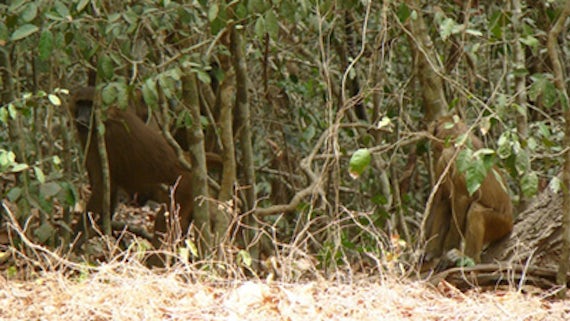New weapon to thwart 'bushmeat' trade
14 Awst 2013

A DNA method able of identifying exact species of primate 'bushmeat' that has been cooked for sale has been developed in a bid to cut illegal trading and better identify and protect those species most at risk.
A team of research scientists from the School of Biosciences, examining the bushmeat trade in urban markets in the West African country of Guinea-Bissau, have used the tool to accurately identify species being traded.
"There is a real difficulty in identifying the exact species being traded in bushmeat markets. We have relied on crude measures of identification, using on the vendor's identification and our best guess," according to Dr Tânia Minhós.
"Both are often wrong because most bushmeat arrives at markets skinned and smoked, so we are confronted with meat that could be anything," she adds.
The lack of a reliable diagnostic tool has hampered previous efforts to examine threat from illegal hunting on the country's colobus monkeys, baboons and chimpanzees.
By collecting tissue samples from the cooked meat, the team were for the first time able to identify the exact primate traded using 'DNA barcoding' – resulting in some interesting and unexpected results. DNA was extracted from the meat samples, and the 'barcoding' –sequencing of species-specific DNA - was then carried out in the School of Biosciences by undergraduate project student Emily Wallace.
The researchers hope that the tool can now be used by government agencies worldwide responsible for controlling illegal bushmeat trade such as CITES (the Convention on International Trade in Endangered Species of Wild Fauna and Flora), the US Fish and Wildlife Service and the UK's Department for Environment, Food and Rural Affairs (DEFRA).
In 2010 it was shown that each year 270 tonnes of illegal bushmeat reaches Paris Charles de Gaulle Airport alone.